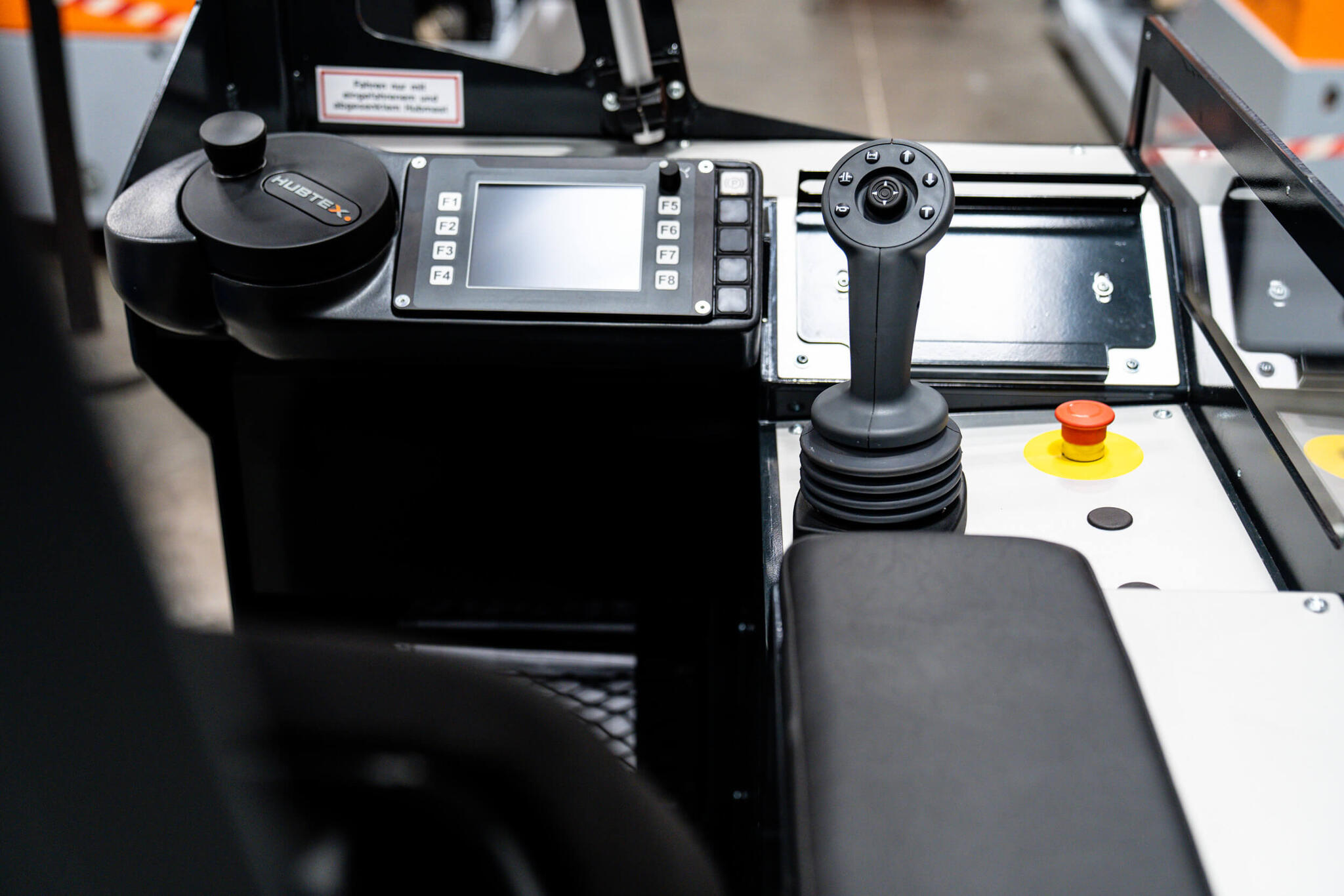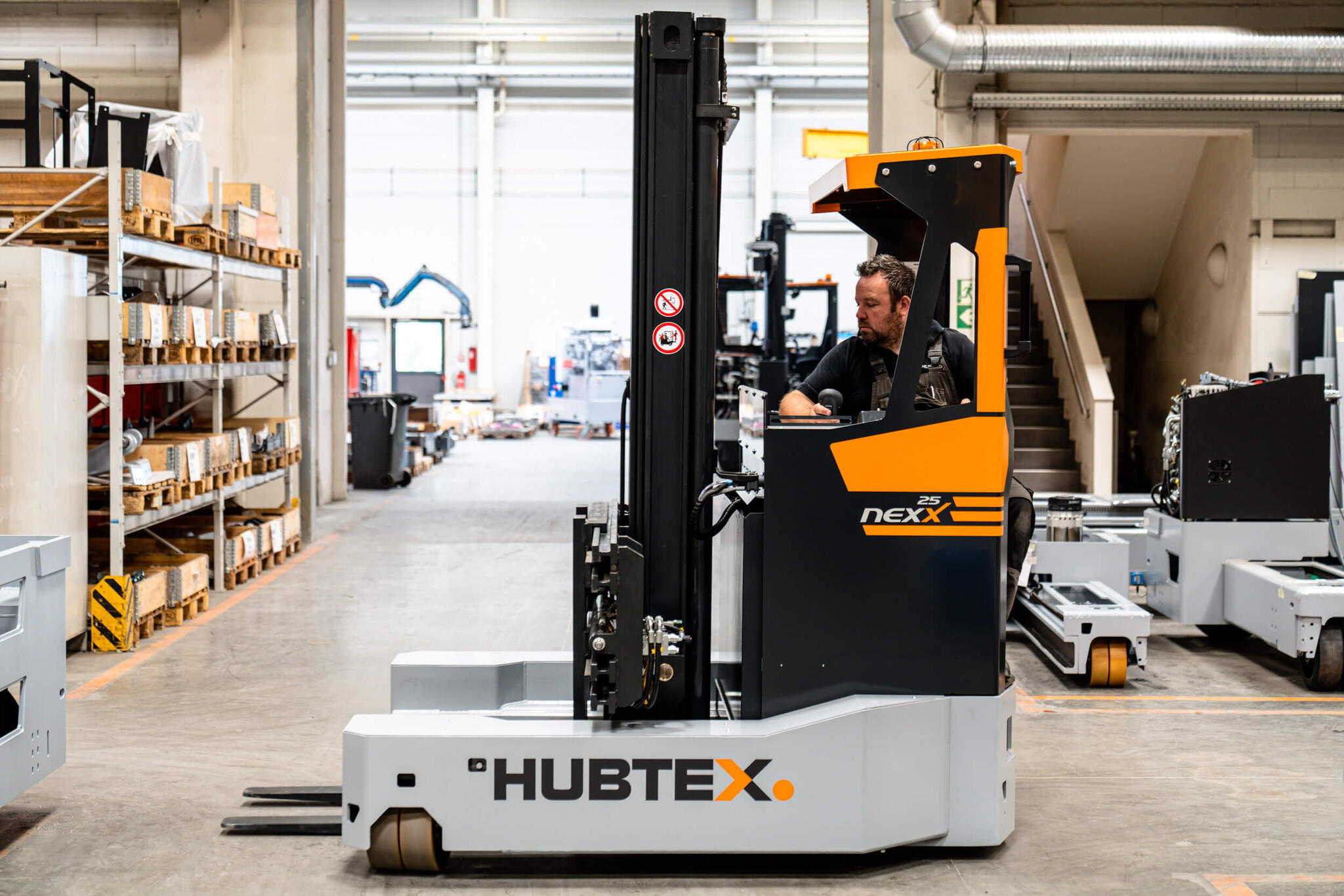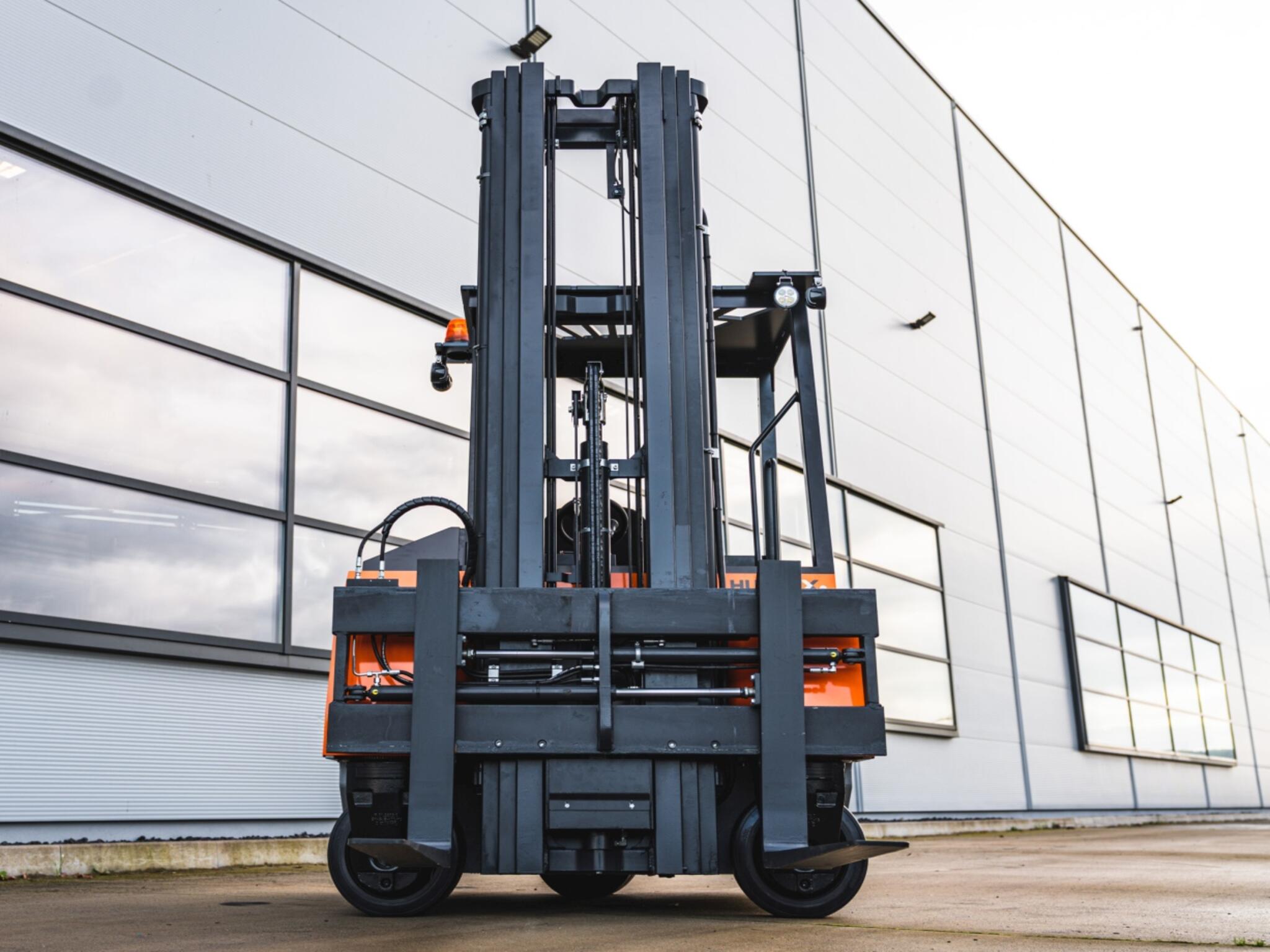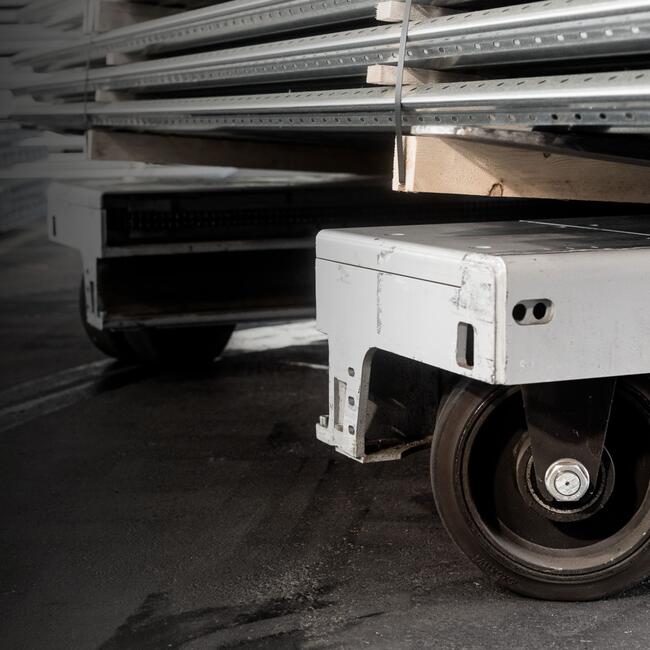A truck's steering system is critical for safe handling and efficient use. Similar to a car, the steering system in a forklift truck has evolved from a simple linkage system and today comes in a number of varieties from hydraulic power steering to multidirectional steering.
Modern steering systems for forklift trucks have to be able to do more than just move wheels. In order to reduce the demands on the driver as much as possible, the steering systems must supply sufficient steering power to move the wheels even when the truck is stationary. In fact, the steering systems in some models of truck are so advanced that the truck can even be moved diagonally or to the side without cranking the wheel or manoeuvering. Depending on the application of the truck, available space and weight class, different types of steering systems may be used. When used in the right way, each system displays different strengths.
The steering system of a forklift truck
The steering system of a forklift truck allows the driver to transport loads safely and efficiently in the smallest of spaces. Precision steering is particularly important when picking up and setting down loads. Depending on their use, forklift trucks often have a high dead weight in order to be able to balance their loads. Yet even without a load, the small wheels of the truck are subject to high weight pressure that must not affect the ease of steering. With the introduction of power steering, the steering wheel can now be operated with almost no resistance. A good steering system must ensure that the driver is protected from vibration and impact, preventing prolonged strain on the arms and hands.
Types of steering systems for forklift trucks
In their simplest configuration, trucks are equipped with a rigid front axle and a steerable rear axle. However, other types of steering have been developed over time.
Rear-wheel steering
With rear-wheel steering, the chassis of the forklift truck is designed with a rigid front axle. At the rear, there is a single moving wheel in the three-wheel version or a steerable rear axle in the four-wheel version. The rear-wheel steering system gives the truck a high level of manoeuverability in the tightest of spaces. The truck rotates almost on the spot around the front axle at the maximum steering angle and therefore requires little more space than the length of the truck itself when turning.
There is little difference in the stability of a 3- or 4-wheel chassis, since the basic principle of the stability triangle generally applies in both cases. The triangle is formed by either two rigid wheels and a pivot point (4-wheel) or two rigid wheels and one steerable wheel (3-wheel). In this case, the overall center of gravity, which results from the load center and the center of gravity of the truck, must not lie outside of this triangle. This will ensure the stability of the truck.
4-way steering
Despite the very high level of maneuverability of rear-wheel steering, this is still not sufficient in certain work situations. For example, the handling of loads in a racking system. In this environment, trucks with 4-way steering systems offer clear advantages. The wheels of the truck can be turned by up to 90°. At the same time, the guide rollers allow fine adjustment of the direction of the truck. The truck can also be moved sideways using 4-way steering. This allows the truck to be moved in the four main directions without traveling around corners.
Multidirectional steering
With multidirectional steering, all wheels are designed to be steered individually. A truck with this type of steering system can not only change the direction of travel at right angles, it can also move diagonally. This steering system therefore offers even more agility than the previous steering systems. Multidirectional steering also makes it easier and faster to work in tight spaces, for example when loading and unloading vehicles or stacking containers.
An additional joystick for controlling the respective steering mode is usually used to steer a multidirectional truck. This is the only system that allows 360-degree movements without changing the orientation of the forklift. A direction indicator for the wheels is located in the cockpit and enables the driver to keep an eye on the wheel positions at all times and to adjust them if necessary.
Different operating modes are used to control or regulate the steering angle of all 4 wheels. In "all-wheel steering" mode, both axles have the same wheel deflection, but in opposite directions, and thus offer the smallest possible turning circle. In "coordinated steering" mode, all four wheels can be set to the same wheel deflection. This allows the truck to be moved in any direction, including sideways or diagonally.

HUBTEX steering systems
HUBTEX forklift trucks are usually equipped with 4-way or multidirectional steering to ensure the greatest possible flexibility and mobility.
Steering codes from HUBTEX
Depending on the model, there are different steering systems – also known as steering codes – which allow different directions of travel.

Steering code H4 and H4SA
4-wheel steering system with direction preselection and 4 programs. In longitudinal travel, your HUBTEX truck can transport long goods quickly through narrow gates and aisles. In transverse travel, the truck can be used as a conventional front loader. The circular travel function enables quick turning. Diagonal travel ensures safe handling when loading and unloading trucks.
Steering code H10
Electronically controlled hydraulic multidirectional steering system, with 10 steering programs.
- Longitudinal travel: Diagonal travel, rear-wheel steering, front-wheel steering, all wheels steerable
- Transverse travel:Diagonal travel, circular travel, rear-wheel steering, front-wheel steering, all wheels steerable, parking position
Steering code HX – 360°
Continuous steering with smooth direction changes.
Up to 50% of the space in your warehouse can be saved thanks to the increased mobility of the truck. Equipped with the patented HX steering system, which is exclusively available from HUBTEX, the truck can switch from longitudinal to transverse travel without stopping. This reduces the time required to adjust the wheels and offers optimal maneuverability. Another advantage of the HX steering system is the reduction in wheel wear, as the steering results in lower friction losses while driving.

Electric steering system from HUBTEX
Fully electric steering is also available for the Phoenix series. By using electric steering, energy consumption can be reduced by up to 85% compared to standard hydraulic steering. In terms of the total energy consumption of the truck, electric steering can account for savings of up to 33% in periods of peak demand. In addition, electric steering systems are almost silent, which makes work much more pleasant for the driver.
